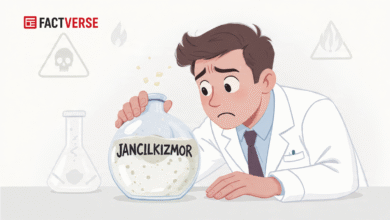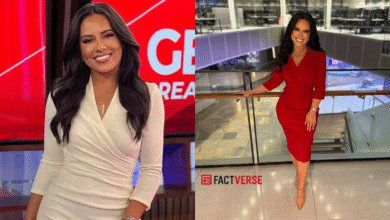Energy efficiency has become a crucial element in the modern world where sustainability is the top priority. The Bureau of Energy Efficiency Drawing serves as an essential blueprint for promoting energy conservation across industries, buildings, and households. It outlines principles, structures, and systems that ensure the optimal use of energy without compromising performance or comfort.
In this article, we’ll dive deep into what the Bureau of Energy Efficiency Drawing represents, why it’s important, its key components, benefits, and how it impacts various sectors across India.
Understanding the Bureau of Energy Efficiency (BEE)
The Bureau of Energy Efficiency (BEE) is a statutory body under the Ministry of Power, Government of India. Established in 2002 under the Energy Conservation Act, BEE’s primary goal is to promote efficient energy use and reduce wastage.
The Bureau sets standards, creates awareness, and implements energy-saving programs nationwide. Its initiatives include star labeling on appliances, building energy codes, and industrial efficiency programs.
What is a Bureau of Energy Efficiency Drawing?
A Bureau of Energy Efficiency Drawing is a detailed schematic or design plan that outlines energy-efficient layouts, systems, and mechanisms in buildings or industrial setups. It ensures that every aspect of the structure — from lighting and HVAC systems to insulation and materials — meets the energy efficiency standards set by BEE.
These drawings are used by architects, engineers, and builders to comply with the Energy Conservation Building Code (ECBC) and to optimize energy usage throughout a project’s lifecycle.
Purpose of the Bureau of Energy Efficiency Drawing

The main purpose of creating these drawings is to visualize and implement energy-saving designs that lead to reduced operational costs and environmental impact.
Through proper design and planning, these drawings:
- Reduce electricity consumption.
- Improve building performance.
- Encourage the use of renewable energy sources.
- Align projects with India’s national energy goals.
Key Elements Included in Bureau of Energy Efficiency Drawings
To achieve maximum efficiency, BEE drawings include multiple design elements, such as:
1. Building Envelope Design
It defines how walls, roofs, and windows interact with external conditions. Proper insulation, glazing, and material choices can drastically improve thermal performance.
2. Lighting Layout
Lighting consumes a significant portion of a building’s energy. The drawing ensures optimal placement of LED lights, sensors, and natural lighting features to minimize energy use.
3. HVAC System Design
Heating, Ventilation, and Air Conditioning systems are major energy consumers. The drawing includes efficient HVAC layouts, ventilation shafts, and airflow calculations.
4. Renewable Energy Integration
Incorporating solar panels, wind energy systems, or geothermal setups is part of modern energy-efficient design strategies.
5. Water and Waste Management
Efficient plumbing, rainwater harvesting, and greywater recycling systems are often illustrated in the drawing.
Importance of Bureau of Energy Efficiency Drawing in Modern Infrastructure
In the era of rapid urbanization, energy demand continues to rise. To counterbalance this growth, BEE drawings are essential for ensuring sustainable infrastructure.
They:
- Promote eco-friendly building practices.
- Help in achieving energy ratings and certifications.
- Improve cost-efficiency over time.
- Support India’s climate action commitments.
How Bureau of Energy Efficiency Drawing Helps Architects and Engineers
For professionals, these drawings serve as a technical roadmap. They help architects design green buildings and assist engineers in implementing systems that consume less power.
Additionally, they make it easier to get government approvals and qualify for BEE ratings, which boost the project’s credibility.
Steps to Create a Bureau of Energy Efficiency Drawing
Creating a compliant drawing involves a structured approach.
Step 1: Site Assessment
Understand the site’s climate, orientation, and energy needs.
Step 2: Energy Modeling
Use simulation tools to predict energy performance and identify optimization areas.
Step 3: Layout Design
Prepare design layouts for lighting, HVAC, insulation, and water management.
Step 4: Integration of Renewable Systems
Incorporate solar panels or energy-efficient materials.
Step 5: Final Review and Certification
Ensure that the drawing meets ECBC and BEE compliance standards before submission.
Benefits of Bureau of Energy Efficiency Drawing
1. Reduced Energy Bills
Energy-efficient design minimizes power usage, directly reducing costs.
2. Enhanced Building Performance
Comfort, air quality, and temperature control improve significantly.
3. Environmental Protection
Lowers carbon emissions and conserves resources.
4. Government Incentives
BEE-rated projects often qualify for financial or policy benefits.
5. Increased Property Value
Energy-efficient designs add long-term value to real estate projects.
Applications of Bureau of Energy Efficiency Drawing
These drawings are widely used across multiple sectors:
- Residential Buildings: Apartments, villas, and housing societies.
- Commercial Buildings: Offices, malls, and hotels.
- Industrial Facilities: Manufacturing units, warehouses, and data centers.
- Public Infrastructure: Hospitals, educational institutions, and government buildings.
Energy Efficiency Standards and ECBC Compliance

The Energy Conservation Building Code (ECBC), introduced by BEE, specifies the minimum energy performance standards for new constructions.
BEE drawings are designed in alignment with ECBC parameters like:
- Building envelope performance.
- Energy-efficient lighting systems.
- Renewable energy integration.
- Advanced HVAC systems.
Compliance not only ensures energy savings but also enhances building reputation.
Technologies Used in BEE-Compliant Drawings
Modern energy-efficient designs rely on advanced technology, including:
- Building Information Modeling (BIM) for accurate visualization.
- Energy simulation software for load analysis.
- Smart sensors and IoT for real-time energy monitoring.
- Green materials like reflective glass and thermal insulation.
Challenges in Implementing Bureau of Energy Efficiency Drawing
Despite its benefits, certain challenges exist:
- Lack of awareness among small builders.
- High initial costs for energy-efficient materials.
- Limited technical expertise in smaller cities.
However, with growing sustainability awareness and government support, these challenges are gradually reducing.
Government Support and BEE Initiatives
The Indian government actively supports energy efficiency programs. BEE has introduced several initiatives, such as:
- Star Labeling Program for appliances.
- Perform, Achieve, and Trade (PAT) scheme for industries.
- Standards & Labeling Scheme for buildings and equipment.
These programs complement the use of Bureau of Energy Efficiency Drawing in practical applications.
Role of Bureau of Energy Efficiency Drawing in Green Certifications
Green building certifications like LEED, GRIHA, and IGBC consider BEE standards as part of their assessment criteria. Projects that follow BEE drawings can easily qualify for such certifications, making them more marketable and sustainable.
Future of Bureau of Energy Efficiency Drawing
With India’s growing focus on sustainability, the role of energy-efficient design is expected to increase exponentially. The future includes AI-driven energy models, smart building automation, and stricter compliance standards.
The Bureau of Energy Efficiency Drawing will continue to evolve with technology, ensuring that future buildings are smarter, greener, and more sustainable.
Conclusion
The Bureau of Energy Efficiency Drawing isn’t just a technical document—it’s a roadmap to a sustainable future. It empowers architects, engineers, and policymakers to make energy-conscious decisions that lead to cost savings, environmental benefits, and long-term efficiency.
As energy conservation becomes a global priority, adopting BEE standards will not only help India achieve its green goals but also set a global example for sustainable development.
Frequently Asked Questions (FAQs)
1. What is the Bureau of Energy Efficiency Drawing?
It is a technical layout or schematic that ensures energy-efficient design and compliance with BEE standards for buildings and industries.
2. Who uses Bureau of Energy Efficiency Drawings?
Architects, engineers, contractors, and energy consultants use these drawings for planning and implementing efficient energy systems.
3. Why are BEE drawings important?
They help reduce energy consumption, lower costs, and support environmental sustainability.
4. How does it differ from normal building drawings?
Unlike standard blueprints, BEE drawings focus on energy performance, renewable integration, and sustainability.
5. How can a project get BEE certification?
Projects must follow ECBC guidelines and get their energy-efficient designs approved by BEE-certified professionals.





